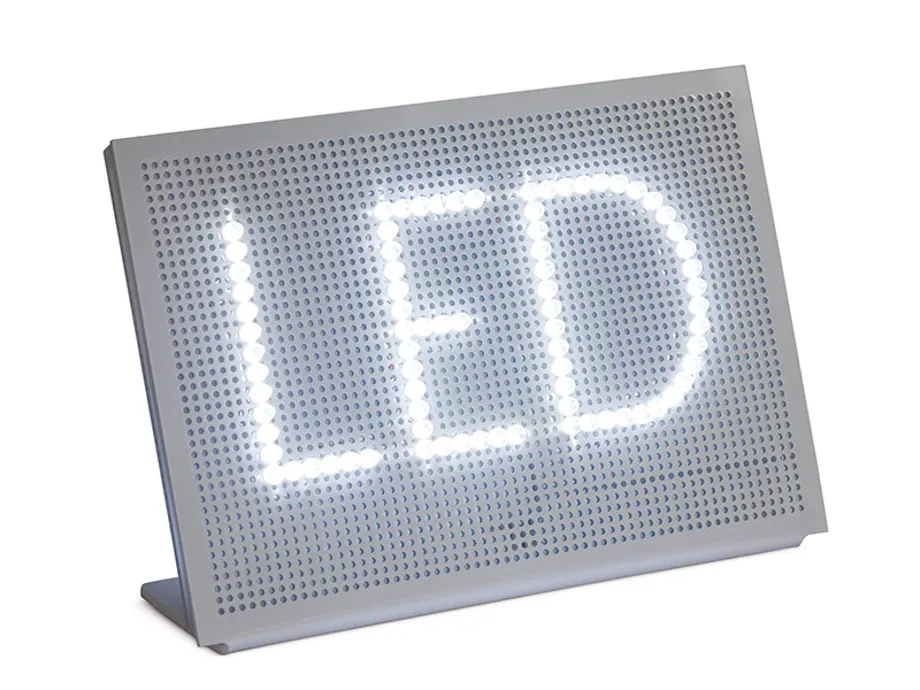Light emitting diodes
A light-emitting diode (LED) is a two-lead semiconductor light source. It is a p-n junction diode (boundary between two types of semiconductor material), which emits light when activated.
When a suitable voltage is applied to the leads electrons are able to combine with electron holes within the device, releasing energy in the form of photons. LEDs appeared as practical electronic components in 1962 and the earliest LEDs emitted low-intensity infrared light.
The first visible-light LEDs were also of low intensity and limited to red. Modern LEDs are available across the visible, ultraviolet, and infrared wavelengths, with very high brightness.
LED design
This display shows the word LED formed out of individual light-emitting diodes.

